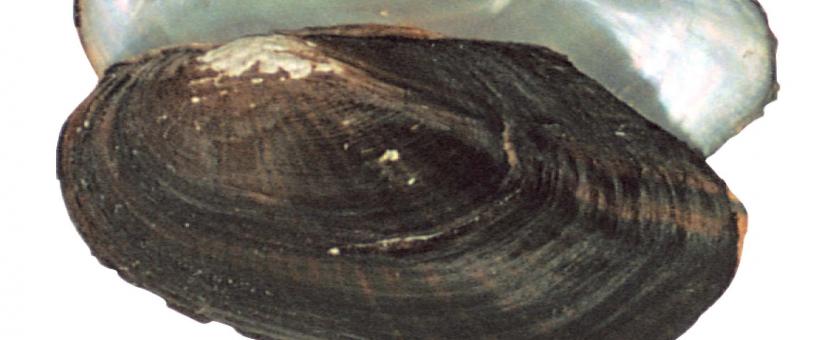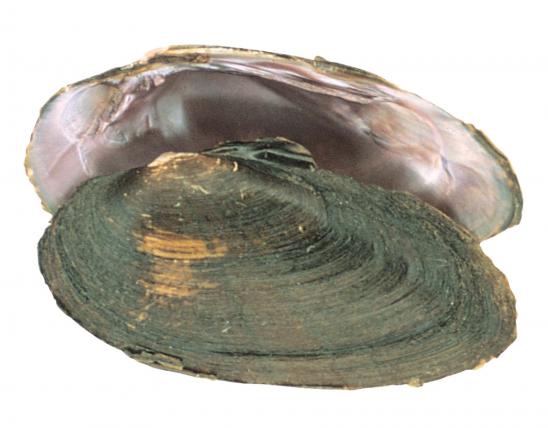
Shell is stout, moderately inflated and elongate; posterior end pointed (males) and broader and squared off (females). Umbo slightly raised above hinge line. Epidermis is dull, greenish-yellow in juveniles, becomes dark brown to black in adults, often with dark green rays that may become less distinct with age. Inside shell beak cavity is shallow; pseudocardinal teeth thin, triangular and nearly parallel to one another; lateral teeth long, thin and straight; nacre (lining) white, iridescent posteriorly.
Similar species: Black sandshell is glossy, darker, longer, larger and heavier with pointed posterior end. Spike has a thicker, heavier shell, not as inflated with well-developed teeth. Little spectaclecase is thicker, more oval and inflated.
Adult length: 2-4 inches.

Widespread across the state, may be locally abundant, as in some of the lakes of the Busch Memorial Conservation Area in St. Charles County.
Habitat and Conservation
This widespread species is one of the few Missouri mussels successful in shallow ponds and the shallow areas of lakes, sloughs and quiet pools in creeks and rivers. Substrate can be silt, mud or sand. Because it is widely distributed and occurs in ponds and lakes, this mussel might be more familiar to people than the mussels that live only in rivers.
Food
Algae and fine particles of decaying organic matter; extracts nutrients and oxygen from water drawn into the body cavity through a specialized gill called the incurrent siphon; sediment and undigested waste are expelled through the excurrent siphon.
Status
Common, although degrading water quality and watershed destabilization interfere with the survival of this and all freshwater mussels.
Life Cycle
Males release sperm directly into water. Females downstream siphon sperm into the gill chamber, where eggs are fertilized. Eggs mature into larvae (called glochidia), which discharge into the water and attach to host fish—in this species, green sunfish, orangespotted sunfish and largemouth bass. The tiny mussel eventually breaks away and floats to the bottom of the stream, and the cycle repeats.
Human Connections
Mussels are excellent biological indicators of water quality because they are long-lived and relatively immobile, accumulating contaminants in water that can be scientifically analyzed.
Ecosystem Connections
Mussels act as nature's “vacuum cleaners,” filtering and cleansing polluted waters. They are also an important food source for other species in the aquatic environment.
























